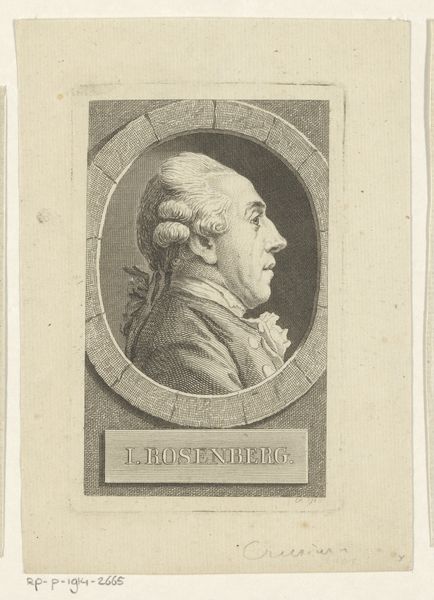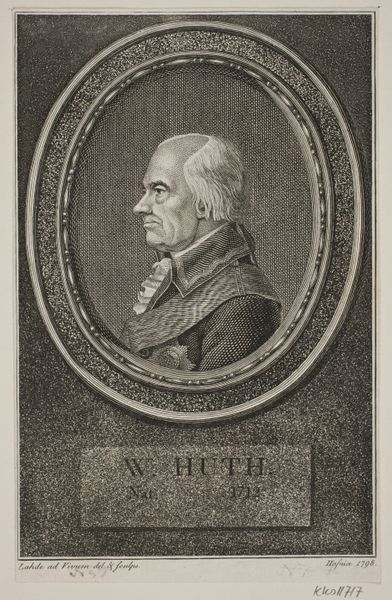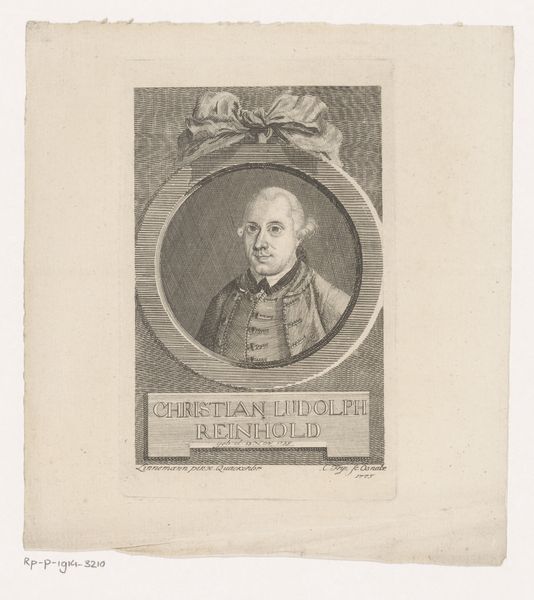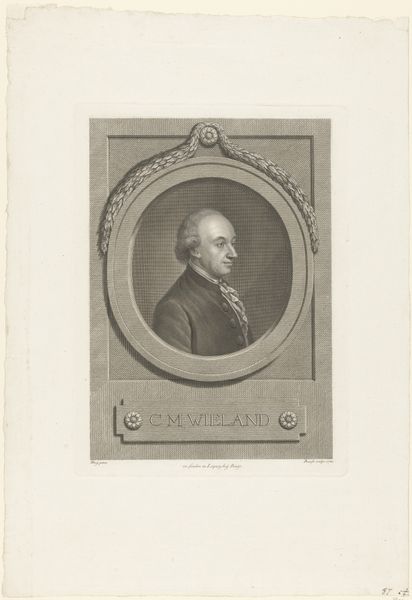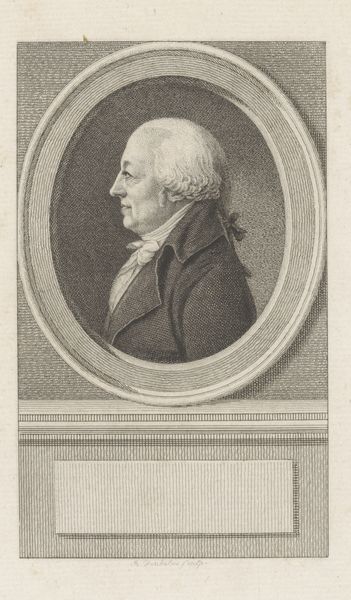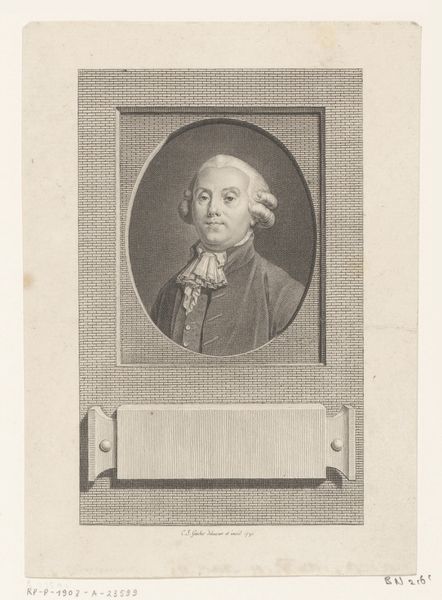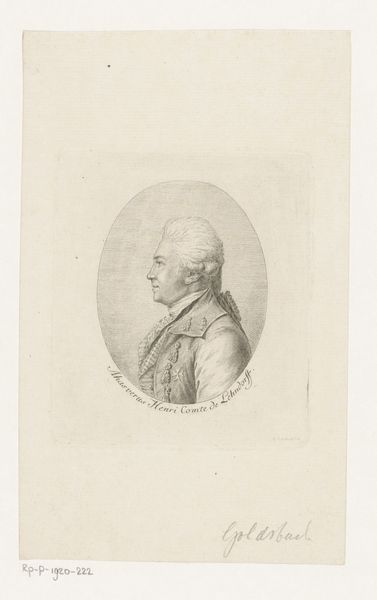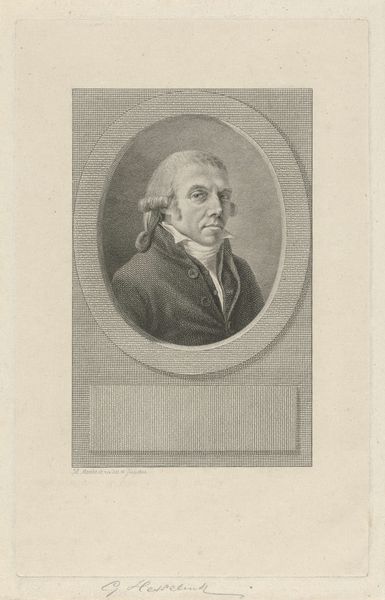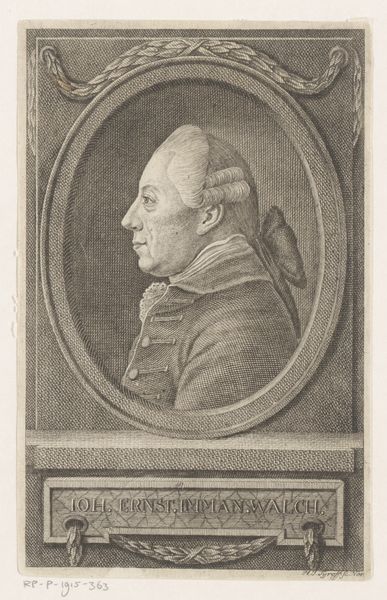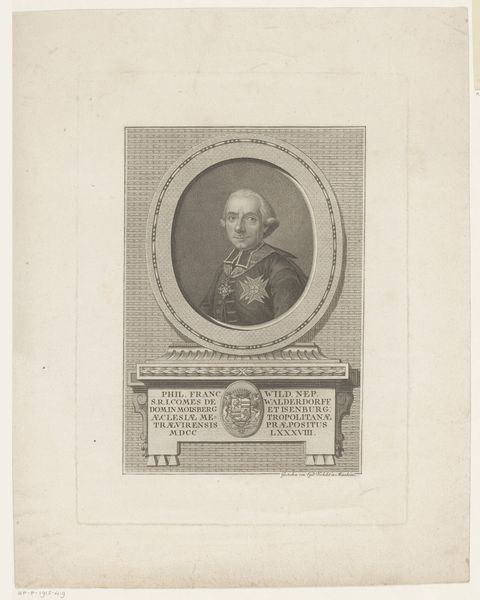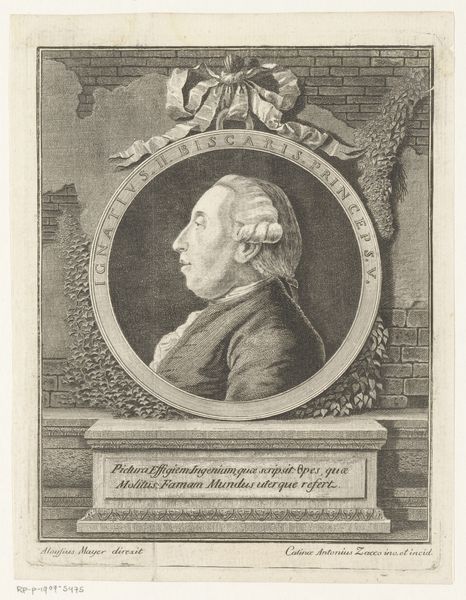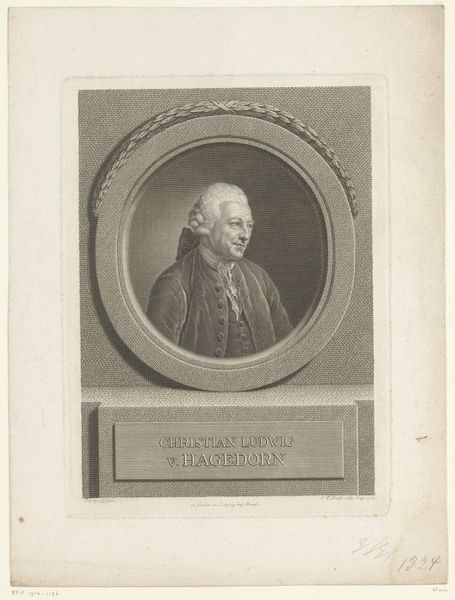
print, engraving
#
portrait
#
neoclacissism
#
antique
# print
#
figuration
#
15_18th-century
#
engraving
Dimensions: 143 mm (height) x 94 mm (width) (billedmaal)
Editor: This is "Portræt af W. Huth" from 1798 by Gerhard Ludvig Lahde. It's an engraving, a print. I’m struck by the detail in the face; the textures created with what must be such tiny lines. What should we consider when viewing this work? Curator: Let's think about the labor involved. The engraving process, the precise actions necessary to create these textures you mentioned. Think about the economic structures in place at the time which permitted this type of labor, this kind of meticulous craft to be supported. Editor: That’s fascinating. So the act of creating the portrait itself is part of its meaning? Curator: Absolutely. We also must examine the context. Engravings like this circulated widely, making portraits accessible beyond the elite who could commission paintings. What implications does that have for notions of status and representation? Editor: So, by creating a print, Lahde democratized portraiture to some degree? Did the original owner matter in terms of that democratization or its appeal? Curator: Precisely. The materials themselves speak to accessibility and distribution. This print is not a unique object, but one of potentially many, designed for circulation. Think of it as a form of early mass media. Editor: That’s really shifted how I see it. I was focused on the image itself, but now I understand the broader implications of its production. Curator: The materiality always informs the message. How does this new understanding change your perspective on portraiture in general? Editor: It makes me consider how art objects are embedded in their time period via their material components and that the medium really IS the message. Thank you for sharing that insight.
Comments
No comments
Be the first to comment and join the conversation on the ultimate creative platform.
